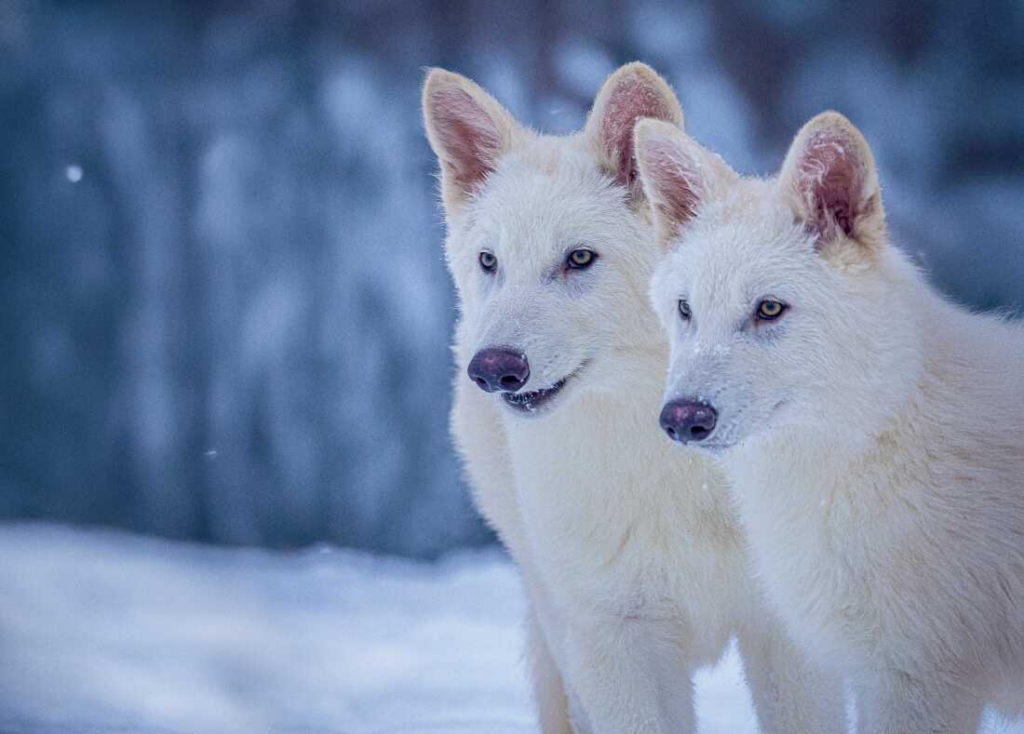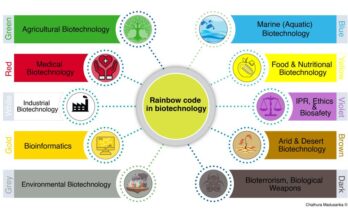Exploring the Science Behind De-Extinction
We first encountered the dire wolf (Aenocyon dirus) in the 2011 series Game of Thrones—a fearsome, almost mythical beast. But behind the fantasy lies a real extinct species that once roamed the Earth. Now, in a story that sounds straight out of science fiction, scientists claim to have brought it back.
Using cutting-edge biotechnology, a team at Colossal Biosciences has engineered a hybrid creature through the concept of de-extinction. But is the dire wolf truly back? Will it be as fierce as legend says? And could it disrupt ecosystems if released into the wild?
Let’s explore the science behind the headlines.

 What Was the Dire Wolf (Aenocyon dirus)?
What Was the Dire Wolf (Aenocyon dirus)?
The dire wolf, sometimes labeled Canis dirus, was a massive carnivore that thrived in North America during the late Pleistocene epoch. It weighed up to 80 kg, nearly double the size of today’s gray wolves (Canis lupus), and hunted formidable prey like mammoths and bison.
About 10,000 years ago, dire wolves vanished—likely due to climate change and the extinction of large mammals. Despite their extinction, they’ve remained iconic in both paleontology and pop culture, captivating our imagination.

 The Science of De-Extinction
The Science of De-Extinction
De-extinction refers to efforts to revive extinct species using technologies like cloning, gene editing, or selective breeding. But reviving a species like the dire wolf is not as simple as extracting ancient DNA and hitting “copy-paste.”
Colossal Biosciences took a different approach: instead of cloning dire wolves, they used gene editing to modify the DNA of living gray wolves, creating a new hybrid that exhibits key features of the extinct species.
How It Worked:
- Scientists sequenced DNA from dire wolf fossils.
- They compared this with the genome of modern gray wolves.
- About 20 genes were identified that contribute to traits like large body size, skull shape, and fur color.
- Using CRISPR-Cas9 gene editing, they modified these genes in living gray wolf cells.
- The edited cells were transplanted into domestic dogs, resulting in genetically modified wolf pups.
 Are These Real Dire Wolves?
Are These Real Dire Wolves?
While these pups resemble dire wolves in size and structure, they are not clones. They are genetically modified gray wolves designed to mimic some physical traits of their extinct cousins.
That raises a question:
Are they really Aenocyon dirus, or are they something entirely new?
From a scientific standpoint, these creatures are hybrids, not exact replicas. Without direct ancestors, cultural learning, or the same ecological pressures, their behavior and ecological role may differ significantly from the original dire wolf.
 What About the Ecosystem?
What About the Ecosystem?
Introducing such hybrids into the wild could lead to unintended consequences:
- They might compete with native species.
- Their presence could alter predator-prey dynamics.
- We don’t fully understand how they’ll behave or interact with the environment.
That’s why many scientists argue for caution. Just because we can bring something back doesn’t mean we should—especially without thorough ecological assessments.

 So, What Do You Think?
So, What Do You Think?
The project has sparked debate worldwide. Some hail it as a leap forward for conservation science. Others warn it’s a dangerous game with nature.
Are these truly dire wolves reborn — or just modern wolves with a prehistoric costume?
Could this be a scientific milestone, or a biological gamble?
 Final Thoughts
Final Thoughts
Science is reaching into the past to reshape the future. Whether the “new” dire wolf becomes a symbol of innovation or caution remains to be seen.
One thing is clear: de-extinction is no longer just an idea. It’s happening. And as science communicators, it’s our responsibility to explore the facts, raise the right questions, and keep the public informed.

Sources – From the Internet.




